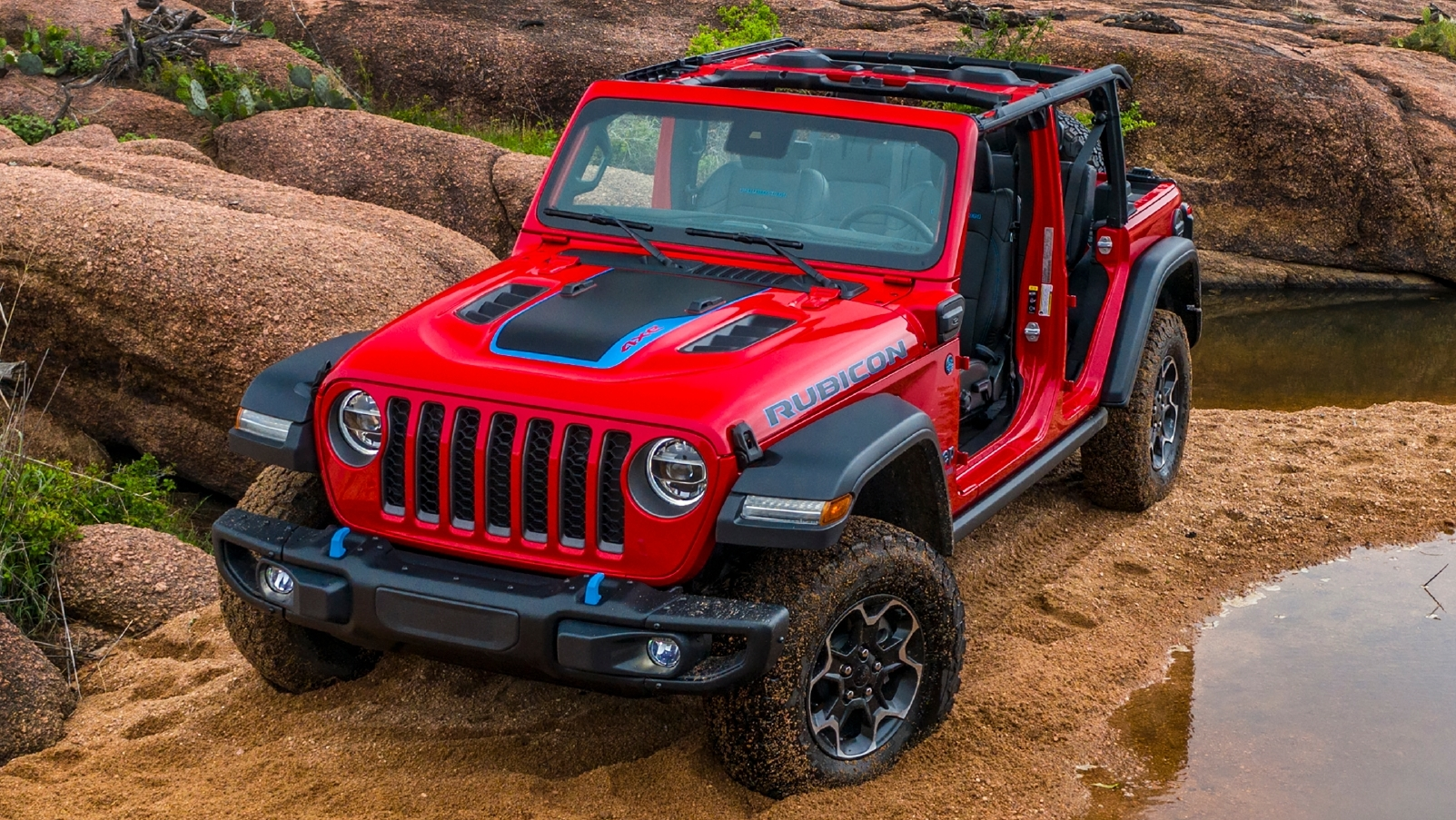Hybrid SUVs have surged in popularity as more drivers seek a blend of fuel efficiency and utility without sacrificing performance. They promise the environmental benefits of electric motors with the long-range assurance of gasoline engines.
However, while many hybrids deliver smooth and seamless transitions between electric and gas power, others fall short, plagued by lurchy shifts and awkward handoffs that can make even a short commute feel frustrating.
This variability in performance often stems from how well the automaker integrates the hybrid system with the transmission, throttle response, and regenerative braking. Some vehicles excel at making the transition nearly imperceptible, while others call attention to the mechanical tug-of-war happening under the hood.
The core of a hybrid system is its ability to shift between electric propulsion and internal combustion power depending on driving conditions.
When executed well, this process is invisible to the driver and passengers. But when the engineering is lacking, the vehicle may lurch forward, hesitate under acceleration, or deliver uneven throttle inputs.
These inconsistencies are often most noticeable at low speeds, during stop-and-go traffic, or when merging onto highways. While some drivers may learn to live with these quirks, others find them unacceptable, especially in vehicles that command premium prices.
Brand reputation doesn’t always predict performance in this category. Even luxury automakers have been guilty of launching hybrids with clunky transitions. Conversely, some less-heralded brands have managed to craft hybrids that drive more like traditional gasoline-powered SUVs than their competitors.
Smoothness isn’t just about comfort; it also affects driver confidence, especially when maneuvering in tight spaces or making sudden acceleration decisions. For families, a calm ride means sleeping children stay asleep and passengers experience less motion discomfort.
This article compares ten hybrid SUVs, splitting them into two categories: five that consistently offer a smooth, refined driving experience, and five that are frequently criticized for their jerky transitions. These observations are drawn from general driving impressions, known vehicle traits, and recurring themes in enthusiast and owner commentary.
Whether you’re in the market for a new hybrid SUV or just curious about which models live up to the hype, this guide provides a clear and detailed comparison of the best and worst performers in hybrid transition behavior.
5 Hybrid SUVs That Stay Smooth
Also Read: 5 Cars Rated Highly for Rear-Seat Safety vs 5 Criticized for Poor Protection
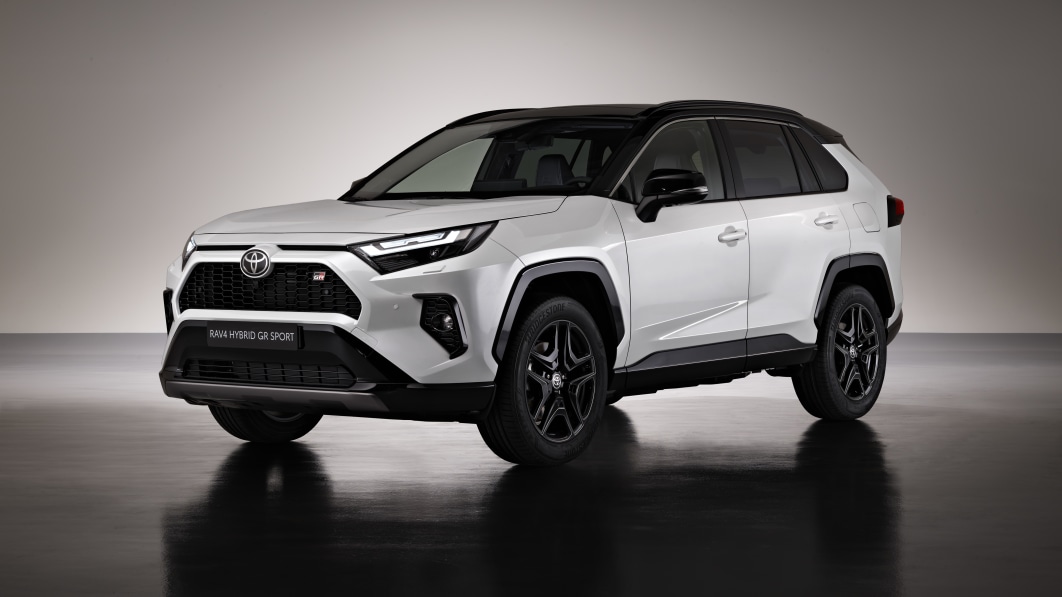
Smooth Performer 1: Toyota RAV4 Hybrid
The Toyota RAV4 Hybrid has long set the benchmark for hybrid compact SUVs. One of its greatest strengths is how effortlessly it transitions between its gasoline engine and electric motor.
Toyota’s Hybrid Synergy Drive system has been refined over many years, and in the RAV4 Hybrid, it works exceptionally well. Drivers often report that they hardly notice when the engine kicks in or out. This seamlessness is a testament to Toyota’s engineering prowess and long-standing commitment to hybrid technology.
Not only is the RAV4 Hybrid smooth in transitions, but it also offers responsive acceleration without the jarring delay some hybrids exhibit. When starting from a stop, the electric motor delivers instant torque, while the gasoline engine joins the action in a nearly unnoticeable way.
The result is a driving experience that feels consistent and predictable, free from sudden surges or pauses. Toyota’s use of an e-CVT (electronic continuously variable transmission) contributes significantly to this smoothness by eliminating traditional gear shifts.
Another factor contributing to the RAV4 Hybrid’s composure is its regenerative braking system. Where some hybrids feel grabby or inconsistent under braking, the RAV4’s system is well-tuned and progressive. This makes it easy for the driver to modulate speed and stop gently, especially in urban traffic. Passengers benefit as well, with fewer sudden jerks or bounces during deceleration.
Comfort is further enhanced by a well-insulated cabin and refined suspension. While the RAV4 Hybrid may not offer the plushest ride in its class, the package is cohesive and balanced.
Toyota has managed to make hybrid technology feel like second nature in this vehicle, which is why it remains one of the most popular and recommended options for buyers seeking a smooth and efficient SUV.
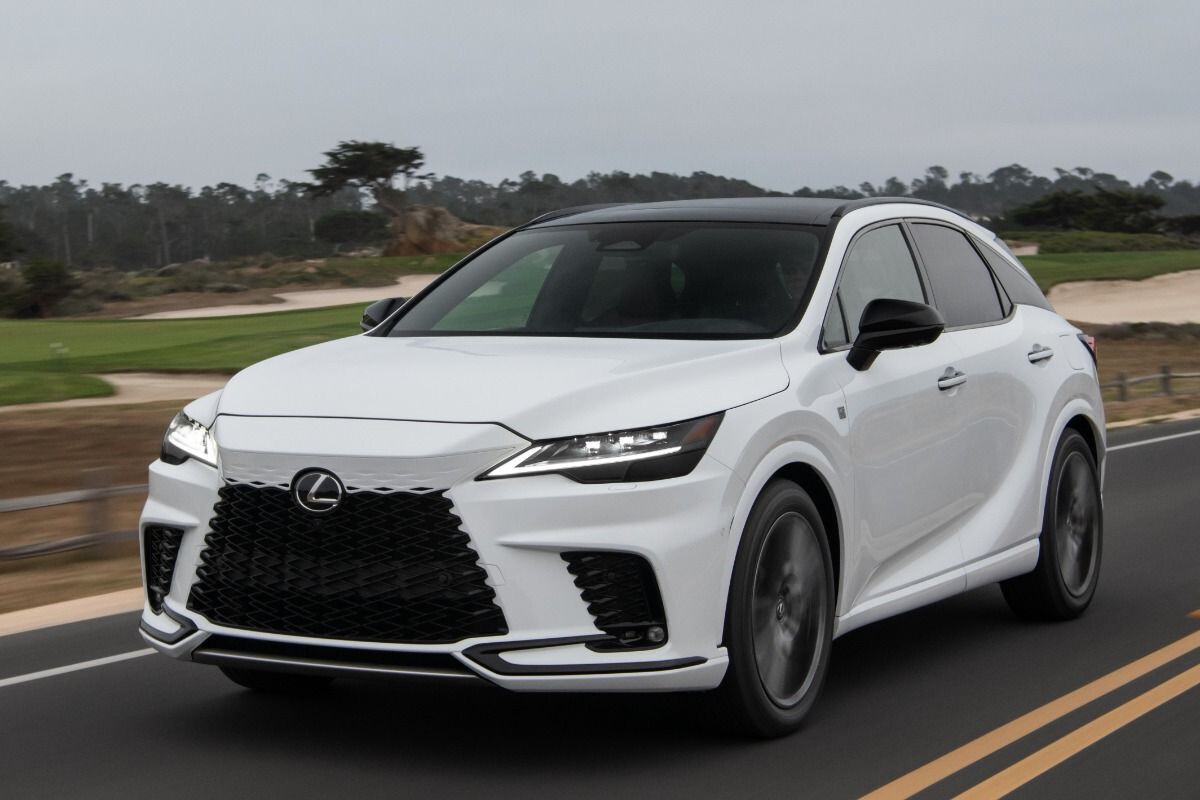
Smooth Performer 2: Lexus RX 500h
The Lexus RX 500h is a prime example of how luxury and hybrid performance can coexist without compromise. One of its standout features is the refined transition between electric and gasoline power, which is nearly imperceptible even under heavy acceleration.
Lexus, as Toyota’s luxury arm, builds upon Toyota’s hybrid expertise but adds additional layers of sound insulation, drivetrain calibration, and polish that elevate the experience to premium levels.
The RX 500h uses a high-performance hybrid setup that includes a turbocharged engine and two electric motors. Despite the complexity of this configuration, it delivers power with exceptional smoothness.
Unlike some hybrids that feel like they’re juggling multiple systems, the RX 500h feels cohesive and linear. Whether cruising at highway speeds or navigating a crowded parking lot, the powertrain behaves predictably and quietly.
What’s particularly impressive is how Lexus has managed the regenerative braking in the RX 500h. Many hybrids struggle to blend regenerative and mechanical braking smoothly, but this model has near-perfect calibration.
It provides consistent pedal feel, which helps the driver maintain control and confidence. For passengers, this translates into less pitching and swaying during stops, enhancing the luxury ride experience.
Inside, the RX 500h is wrapped in comfort and technology that complements its calm driving nature. Acoustic glass, plush materials, and advanced dampers all contribute to the feeling of serenity.
Drivers are often surprised by how quick yet smooth the RX 500h feels, making it a rare hybrid that delivers both performance and peace. It’s a vehicle that demonstrates how hybrid SUVs can be as smooth and refined as their gas-only counterparts, if not more so.
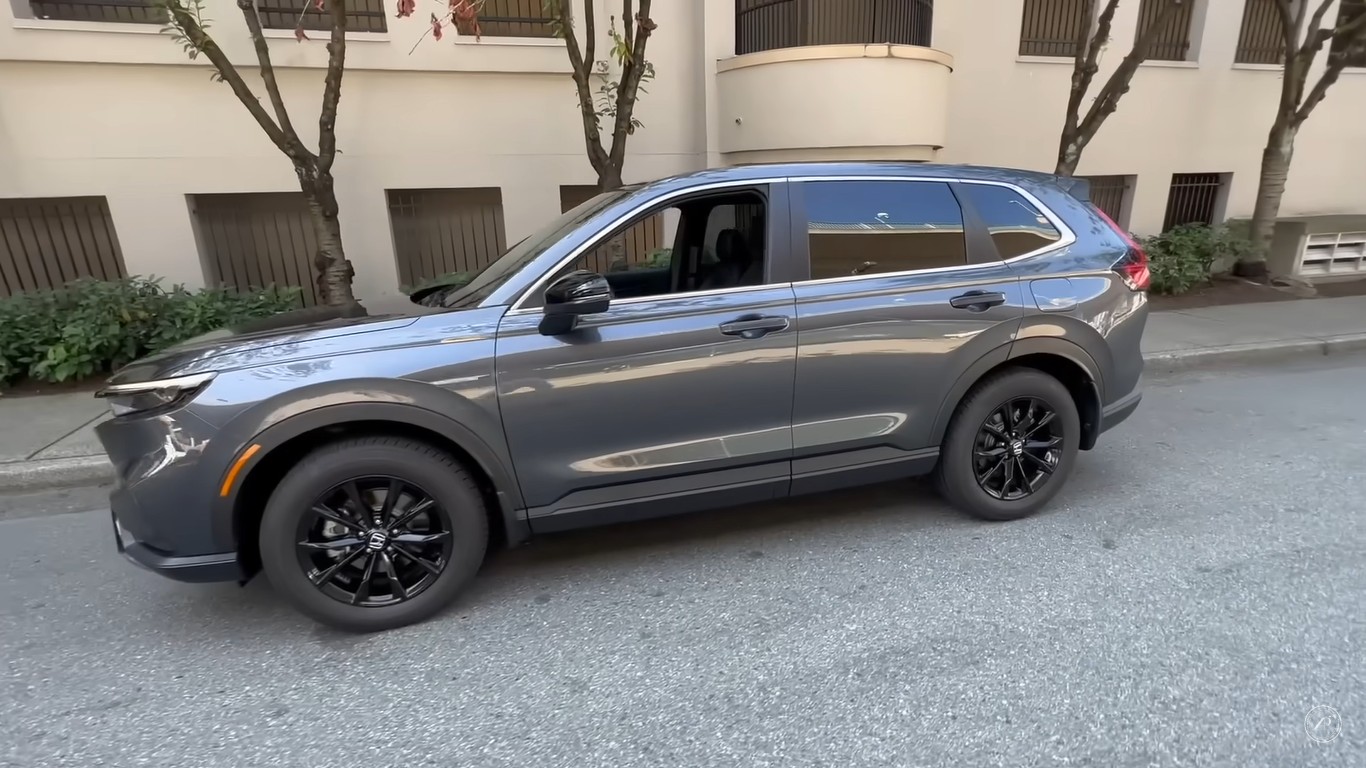
Smooth Performer 3: Honda CR-V Hybrid
The Honda CR-V Hybrid brings an impressive blend of efficiency, practicality, and smooth driving to the mainstream compact SUV segment.
Honda’s hybrid system is known for its intelligent control software, which allows for fluid switching between electric and gas modes. The CR-V Hybrid feels particularly well-suited for daily driving, offering a power delivery that is both responsive and calm.
One of the standout elements of the CR-V Hybrid is its linear throttle response. There’s none of no rubber-band effect that plagues some CVT-equipped hybrids.
Honda’s system mimics the feel of a conventional automatic transmission, which adds to the sense of familiarity and control. Whether in slow-moving traffic or accelerating up a highway ramp, the vehicle responds naturally without hiccups or hesitation.
Equally important is how the CR-V Hybrid manages deceleration. The regenerative braking system is subtle and progressive, avoiding the abrupt engagement that can make other hybrids feel twitchy.
Drivers can ease into stops with confidence, and passengers are less likely to be thrown forward unexpectedly. This contributes to a more relaxed and composed driving experience.
Beyond the powertrain, Honda has refined the CR-V Hybrid’s ride quality and cabin quietness. Road noise is minimal, and the suspension handles bumps without transmitting harshness into the cabin.
Together, these characteristics create a driving experience that feels mature and sophisticated, especially for a model in this price range. It’s a well-rounded vehicle that prioritizes user-friendliness without sacrificing the core benefits of hybrid technology.
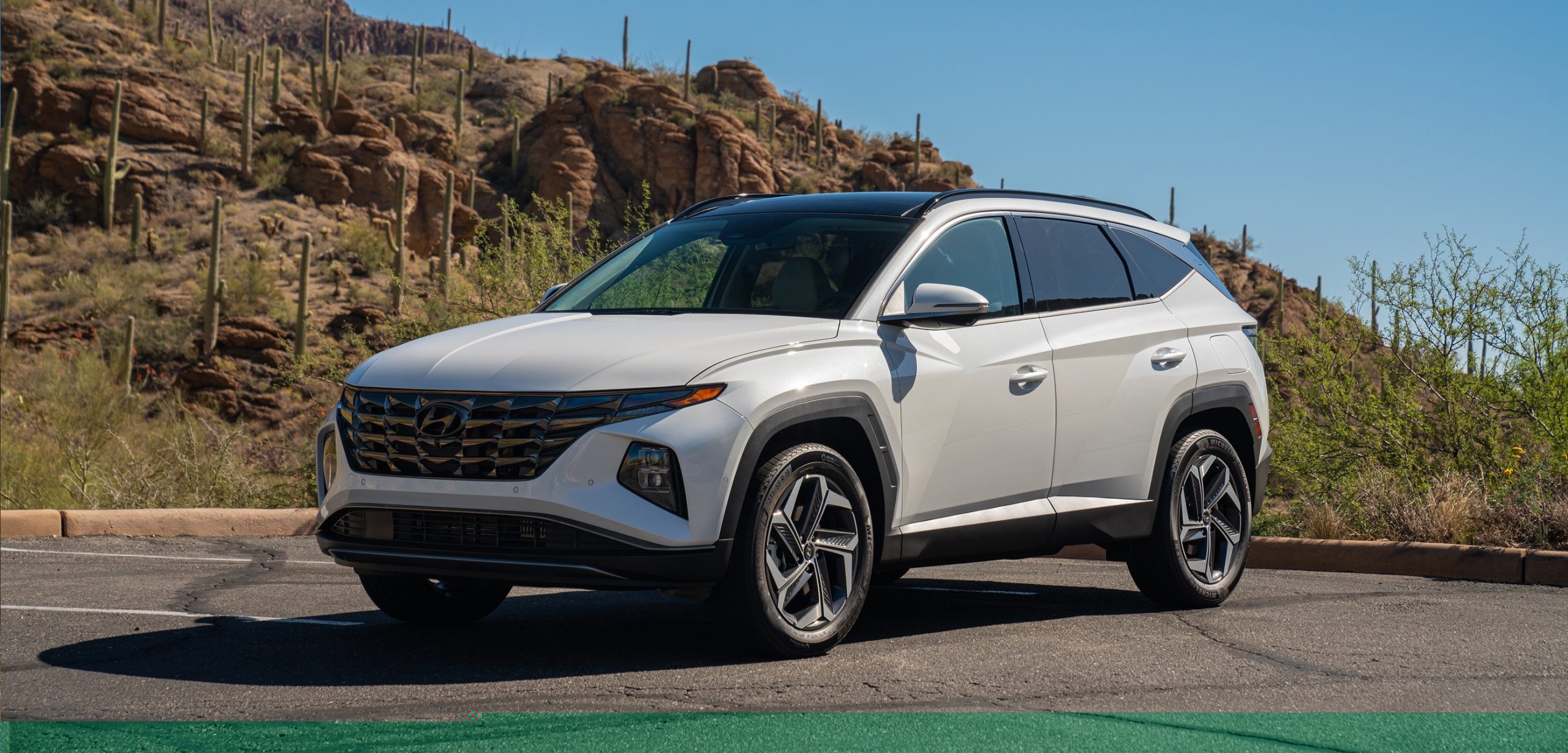
Smooth Performer 4: Hyundai Tucson Hybrid
The Hyundai Tucson Hybrid stands out as one of the smoothest in its segment, thanks to a well-tuned six-speed automatic transmission and a hybrid system that is both powerful and quiet.
Unlike many competitors that use CVTs, Hyundai opted for a more traditional transmission layout, which pays dividends in terms of drivability and refinement. Gear changes are nearly seamless, and power is delivered consistently across the RPM range.
Hyundai’s engineering ensures that the transition between electric and gas power is barely noticeable. There’s a polished quality to how the vehicle behaves at low speeds and under acceleration.
The Tucson Hybrid starts in electric mode in most low-speed conditions and gently engages the gas engine when needed, without causing any noticeable jerk or vibration. This makes it ideal for city driving and long commutes alike.
One of the Tucson Hybrid’s lesser-known strengths is its excellent NVH (noise, vibration, and harshness) control. Even when the gas engine is running, it’s so quiet and well-insulated that passengers often can’t tell which power source is currently active. This level of refinement is unusual in the non-luxury segment and adds significantly to the vehicle’s appeal.
Ride quality is another strong point. The suspension soaks up imperfections with grace, and the steering is light yet accurate. All of these traits work together to create a cohesive, well-mannered SUV.
The Tucson Hybrid proves that a non-premium brand can produce a hybrid SUV that matches or even exceeds the refinement of more expensive competitors. It’s a compelling choice for drivers seeking smoothness without the luxury price tag.
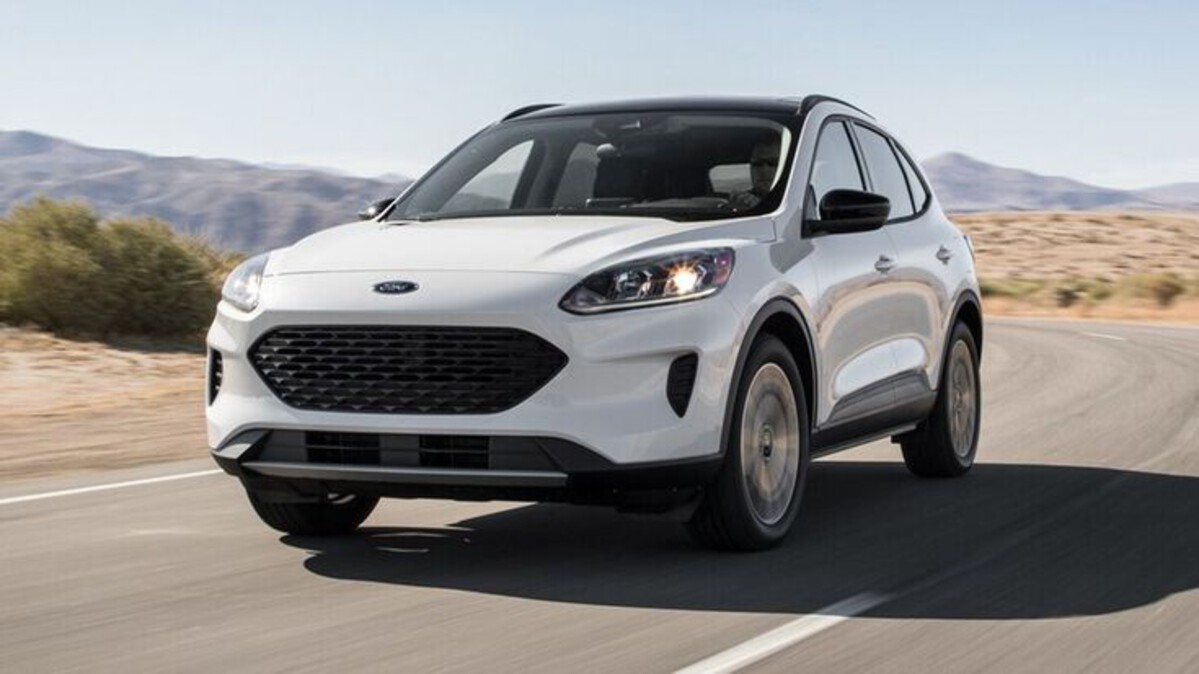
Smooth Performer 5: Ford Escape Hybrid
The Ford Escape Hybrid offers a surprisingly smooth and responsive driving experience, challenging the perception that American hybrids lag behind their Japanese and Korean counterparts.
Ford has steadily improved its hybrid technology, and the latest Escape Hybrid is a testament to that progress. The transition between electric and gas power is so well-managed that drivers are unlikely to notice it in most conditions.
A key part of the Escape Hybrid’s smoothness lies in its updated power-split hybrid transmission. Unlike older systems that sometimes hunted for gears or hesitated under acceleration, this new setup provides a consistent power flow.
Whether starting from a stop or merging onto a freeway, the Escape delivers a confident surge of power that feels natural and uninterrupted. This fluidity enhances the vehicle’s everyday usability and makes it easy to drive.
Brake feel is another area where the Escape Hybrid excels. The blend between regenerative and mechanical braking is well-tuned, allowing for gradual stops without the jarring bite that some hybrids suffer from.
Drivers can modulate speed with precision, and passengers remain comfortable during both quick and gentle stops. This adds to the sense of control and predictability behind the wheel.
The Escape Hybrid also benefits from a refined chassis and well-insulated cabin. Road and wind noise are kept to a minimum, which helps highlight how quietly the hybrid system operates.
It’s a car that behaves more like a conventional gas-powered SUV but with the efficiency advantages of a hybrid. For those who are new to hybrids or skeptical about their drivability, the Escape Hybrid makes a very strong case.
5 Known for Jerky Transitions
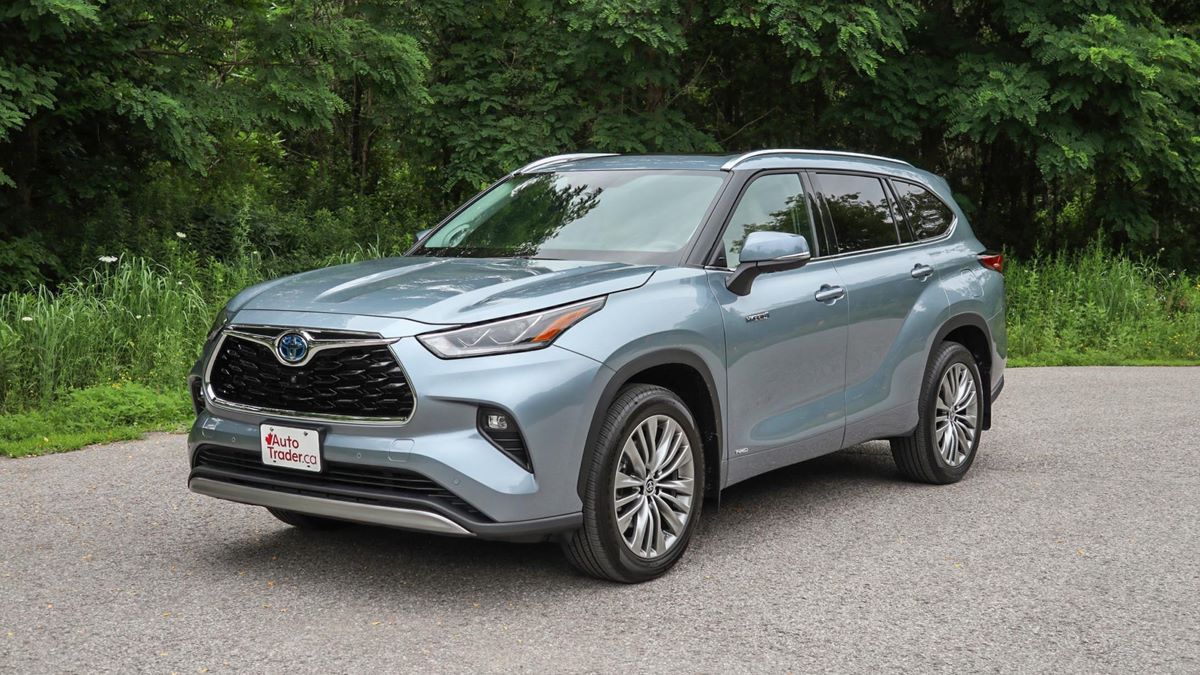
Jerky Performer 1: Toyota Highlander Hybrid
Despite Toyota’s strong hybrid reputation, the Highlander Hybrid has drawn criticism for less-than-smooth transitions between its electric and gasoline power.
The larger size of the Highlander, combined with its more complex load requirements, seems to strain the system’s ability to maintain smoothness under varying conditions. At low speeds, especially, drivers often report that the engine can kick in with an abruptness that feels at odds with Toyota’s otherwise polished hybrid experience.
The problem isn’t usually with the initial acceleration, which tends to be reasonably smooth thanks to the electric motor’s torque. Instead, the jerky behavior often arises when the vehicle shifts between cruising and power demands.
If a driver lightly presses the accelerator to increase speed, the system can hesitate, then lurch forward as the gasoline engine engages more forcefully than expected. This inconsistency can erode driver confidence and is particularly noticeable in urban stop-and-go situations.
Another concern with the Highlander Hybrid involves braking transitions. The regenerative braking is not as progressive as it could be, and some drivers have noted a sudden grab or inconsistent pedal feel.
This lack of linearity makes it more difficult to bring the vehicle to a smooth stop, especially when approaching a light or stop sign. Such quirks are out of character for a family-oriented SUV meant to prioritize comfort.
While the Highlander Hybrid offers excellent fuel economy and interior space, the driving experience is not as refined as its smaller sibling, the RAV4.
For drivers used to buttery transitions in smaller hybrids, the Highlander may feel surprisingly clunky. Toyota may need to revisit the software and calibration of the hybrid system in future iterations to bring this model up to the standard of smoothness expected from the brand.
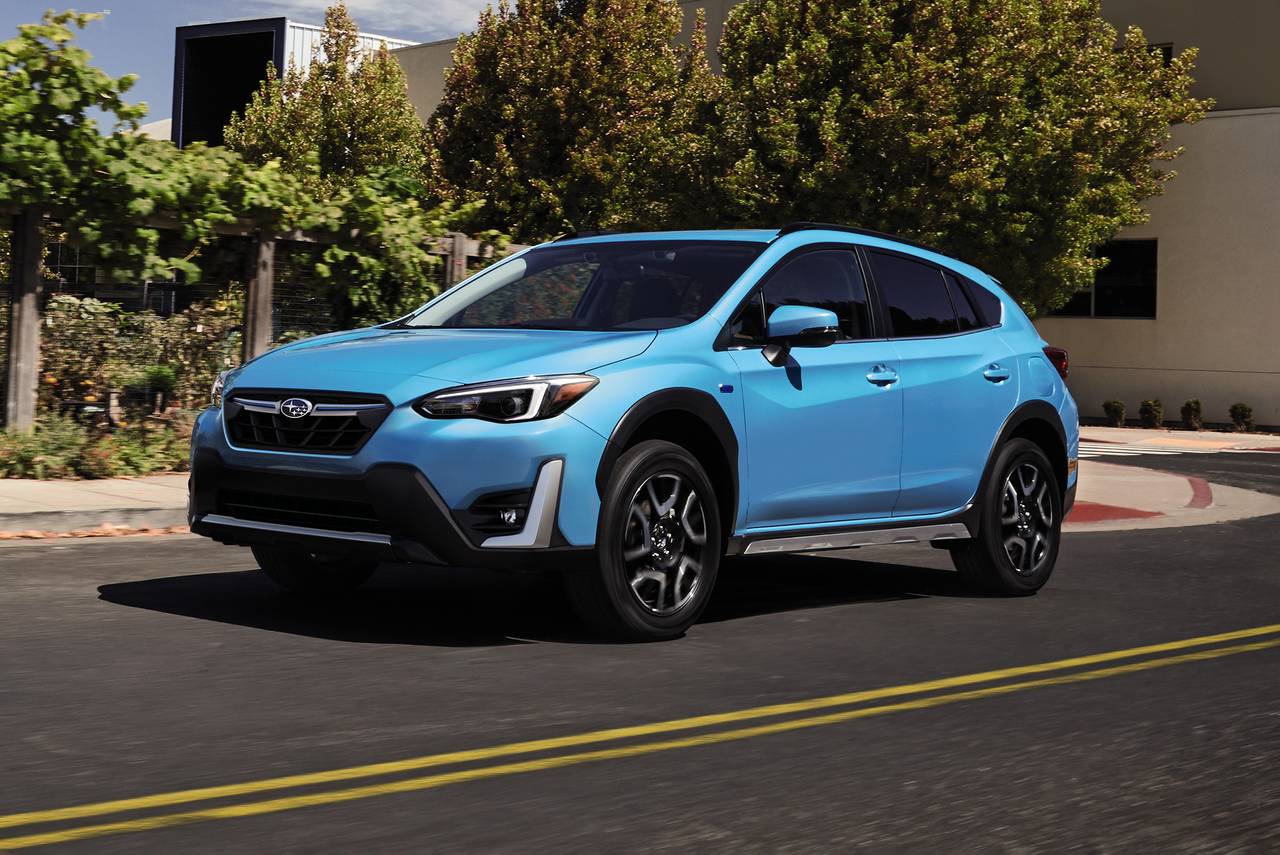
Jerky Performer 2: Subaru Crosstrek Hybrid
The Subaru Crosstrek Hybrid is a plug-in hybrid version of the popular Crosstrek, and while it brings all-wheel drive and decent efficiency to the table, its hybrid system is unrefined.
The transitions between electric and gasoline power are often awkward, marked by noticeable surges and delays. The system’s low electric-only range also means it frequently shifts between modes, compounding the jerkiness.
One of the primary issues lies in how Subaru integrated the hybrid hardware into a platform not originally designed for electrification.
The result is a powertrain that feels like an afterthought rather than a cohesive system. Acceleration from a stop can be uneven, with the vehicle sometimes hesitating before abruptly engaging the gas engine. This can be disconcerting in situations that require quick movement, like turning into traffic.
Brake behavior is similarly inconsistent. The transition between regenerative and friction braking often feels clunky, particularly at lower speeds. Drivers report that the brakes can feel grabby one moment and vague the next, making smooth stops a challenge. This unpredictability adds stress to what should be a relaxing, fuel-efficient ride.
The experience is made worse by limited power and a noisy cabin under load. The Crosstrek Hybrid lacks the seamlessness that defines better-executed hybrid systems.
While Subaru’s standard all-wheel drive and rugged styling may appeal to adventure-minded drivers, the hybrid component of this SUV feels unpolished and underdeveloped, especially compared to competitors in the same segment.
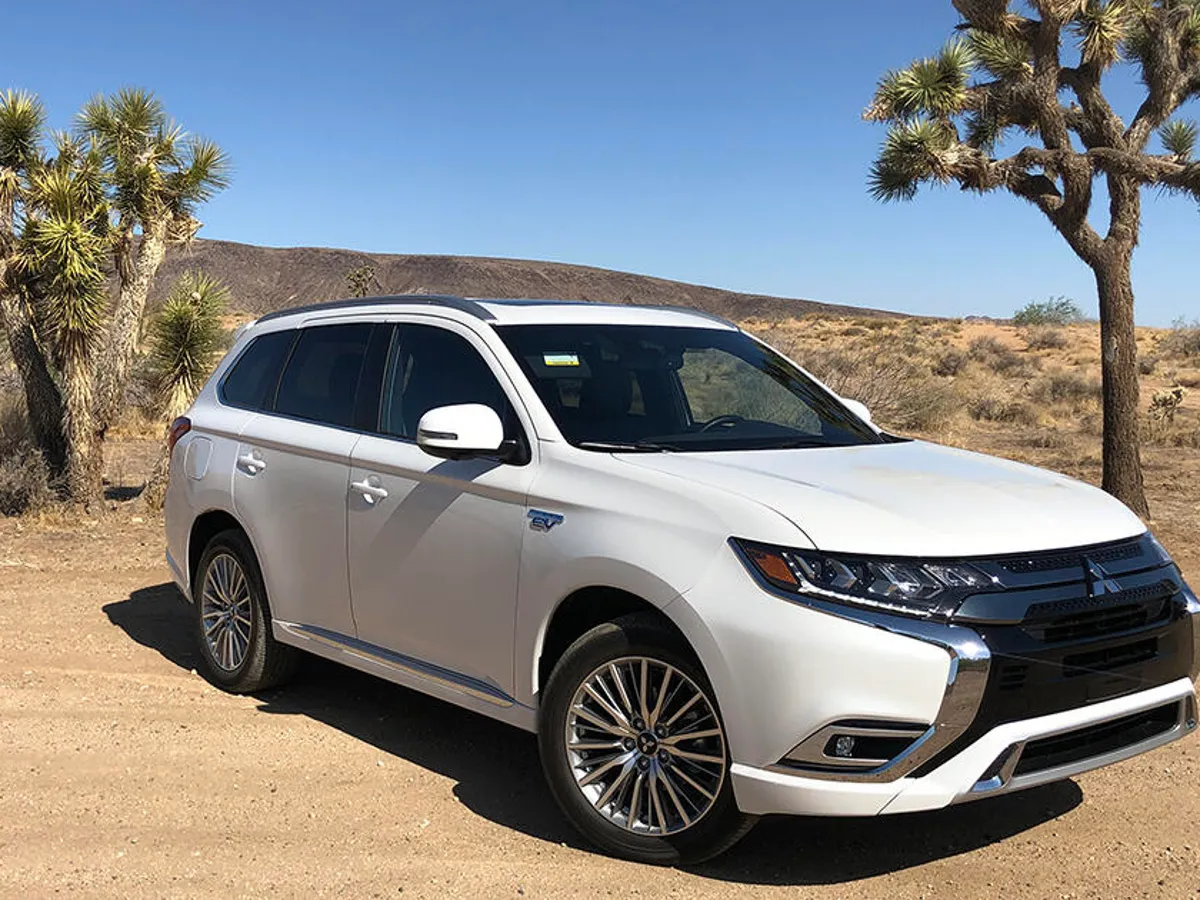
Jerky Performer 3: Mitsubishi Outlander PHEV
The Mitsubishi Outlander PHEV has earned praise for its all-electric range and utility, but its hybrid transitions leave much to be desired.
Unlike some rivals that prioritize seamless operation, the Outlander’s powertrain can feel disjointed and abrupt. When switching from EV to hybrid mode, the engine often fires up with a noticeable jolt, breaking the calm of electric driving.
Part of the issue is the way Mitsubishi’s system handles driver input. Acceleration isn’t linear, and there can be a delay between pressing the pedal and the vehicle responding.
When the gas engine finally engages, it can do so with a surge that feels uncoordinated. This undermines the driving experience, particularly in urban or suburban settings where traffic requires frequent modulation of speed.
The braking system also contributes to the vehicle’s jerky personality. Regenerative braking is tuned inconsistently, leading to a non-linear feel that can be difficult to master. The transition to mechanical braking can occur suddenly, causing a jarring stop. For drivers expecting a refined and predictable ride, this behavior is a letdown, especially in a vehicle marketed as both modern and practical.
Interior noise is another factor that exacerbates the lack of smoothness. When the gas engine engages, it does so noisily, drawing attention to the hybrid transition rather than masking it.
The result is a driving experience that constantly reminds the driver of what the vehicle is doing, rather than making it feel seamless. While the Outlander PHEV has its strengths, smoothness is not one of them, and this detracts from its value as a plug-in SUV.
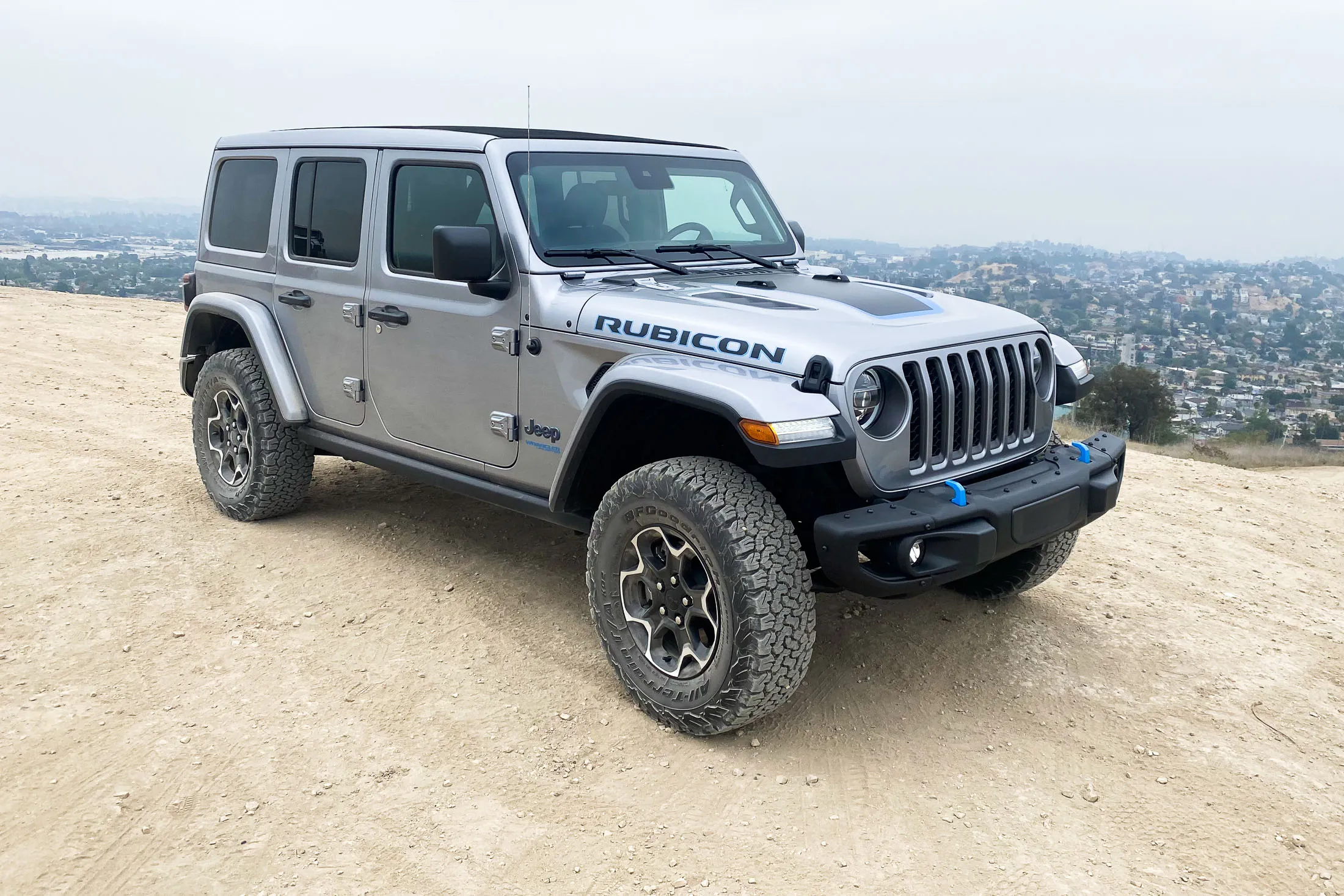
Jerky Performer 4: Jeep Wrangler 4xe
The Jeep Wrangler 4xe represents an ambitious attempt to electrify one of the most iconic off-road vehicles on the market. While the concept is bold and the performance respectable, the hybrid system suffers from transition issues that affect drivability.
The shifts between electric-only and hybrid modes are not always well-managed, leading to sudden jolts and unpredictable throttle responses.
This behavior is especially apparent when driving in hybrid mode. At lower speeds or when coasting, the electric motor can handle the load smoothly, but as soon as more power is demanded, the gas engine kicks in with a noticeable clunk.
This suddenness is magnified by the Wrangler’s body-on-frame design, which doesn’t do much to isolate drivetrain vibrations. The result is a rugged-feeling transition that may be tolerable on trails but feels rough on city streets.
Regenerative braking also lacks finesse. The pedal feel is inconsistent, with noticeable variation in response based on speed and battery state.
In slow traffic or while descending hills, the system can feel choppy, requiring the driver to frequently adjust braking pressure. This adds fatigue over long drives and detracts from the otherwise adventurous spirit of the vehicle.
Although the 4xe excels in terms of torque and off-road capability, the hybrid system is not tuned for everyday smoothness. Jeep enthusiasts may accept this as part of the vehicle’s character, but for buyers expecting a refined hybrid experience, the 4xe falls short. It’s a case where performance took priority over polish, leaving a vehicle that is powerful but not always pleasant to drive in typical conditions.
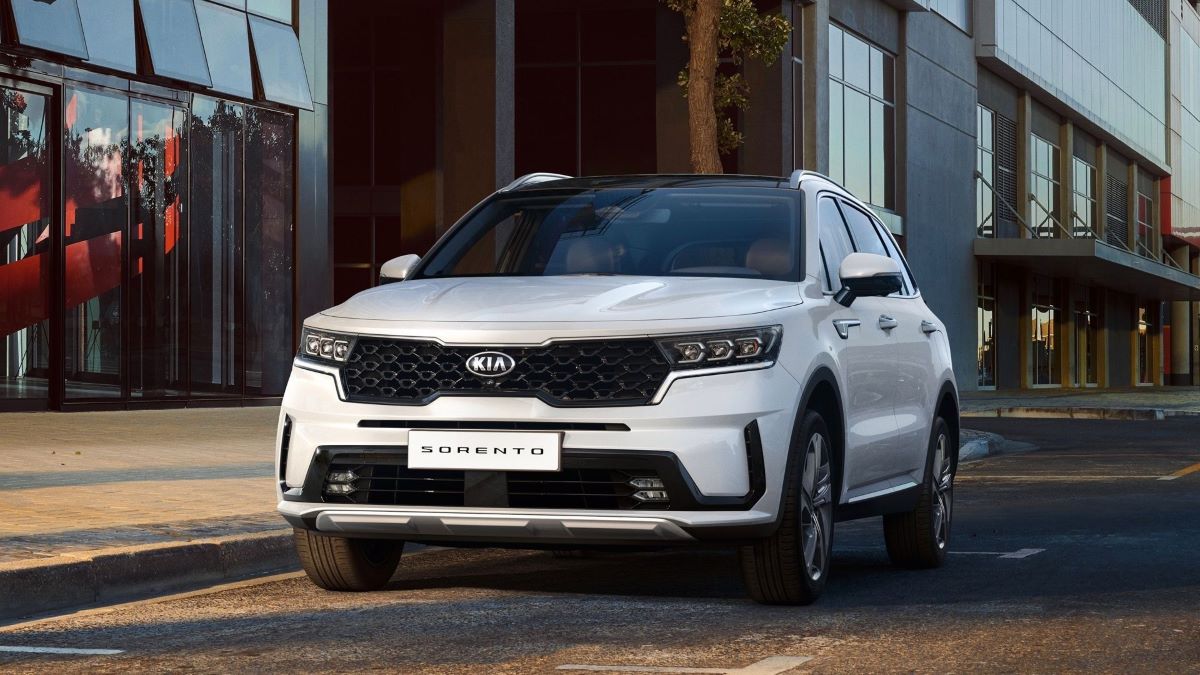
Jerky Performer 5: Kia Sorento Hybrid
Kia has made impressive strides in electrification, but the Sorento Hybrid still exhibits transition issues that put it at a disadvantage in this comparison.
The hybrid system uses a six-speed automatic transmission paired with a turbocharged engine and electric motor, which sounds good on paper but doesn’t always work harmoniously in practice. The shifts can feel abrupt, particularly under moderate throttle.
One of the most frequent complaints involves the engine’s entry into the powertrain. It often comes online with a thud, especially if the driver accelerates gently and the vehicle is transitioning from electric to gas.
This disrupts the otherwise pleasant ride and can feel jarring in an otherwise comfortable cabin. Unlike some CVT-based competitors, the traditional transmission here doesn’t always deliver smooth gear changes.
Throttle response is also inconsistent. At times the vehicle surges forward after a slight delay, making it hard to judge acceleration accurately.
This behavior can be unsettling in traffic or during lane changes. It can also give the impression that the vehicle is less powerful than it really is, simply because the transitions interrupt the power flow.
The braking system shows similar flaws. Regenerative braking is implemented but not well-blended with the traditional brakes. This results in a somewhat clunky pedal feel, especially noticeable when slowing to a stop.
Kia has made great strides with the EV6 and other fully electric vehicles, but in the Sorento Hybrid, the hybrid integration still needs refinement. It’s a good SUV held back by hybrid transitions that feel rushed and undercooked.
Also Read: 10 Best Cars for Cost per Mile After 100,000 Miles
Hybrid SUVs offer a unique balance of performance and efficiency, but not all are created equal when it comes to smoothness. Models like the Toyota RAV4 Hybrid, Lexus RX 500h, and Hyundai Tucson Hybrid demonstrate how advanced engineering can create a nearly invisible transition between electric and gas power, resulting in a refined and enjoyable driving experience.
These vehicles prioritize the user experience, making hybrid driving accessible, comfortable, and predictable. On the other hand, some models struggle with hybrid integration, offering transitions that are abrupt, noisy, or poorly calibrated.
Vehicles such as the Mitsubishi Outlander PHEV, Jeep Wrangler 4xe, and Kia Sorento Hybrid reveal the challenges of adding electrification to existing platforms or prioritizing power over polish. While these SUVs may succeed in other areas, their hybrid performance detracts from their appeal.
For buyers considering a hybrid SUV, smoothness should be a key consideration alongside fuel economy, features, and price. A rough or inconsistent driving experience can quickly sour the appeal of an otherwise efficient vehicle. Fortunately, as hybrid technology continues to evolve, more models are expected to move into the “smooth” category.
Until then, it’s essential to test drive and pay close attention to how each vehicle handles transitions. The difference between a refined hybrid and a jerky one can be the difference between satisfaction and frustration over the long term.

